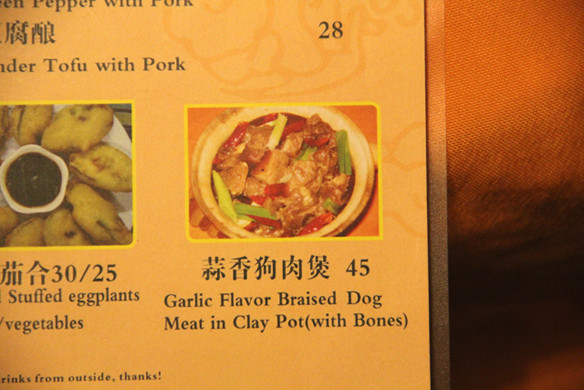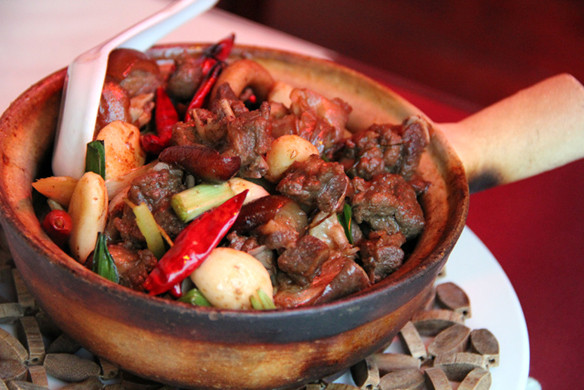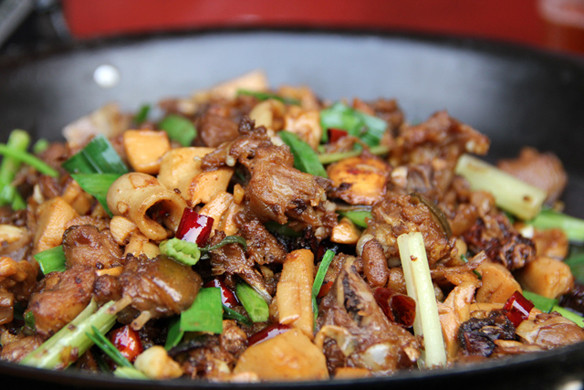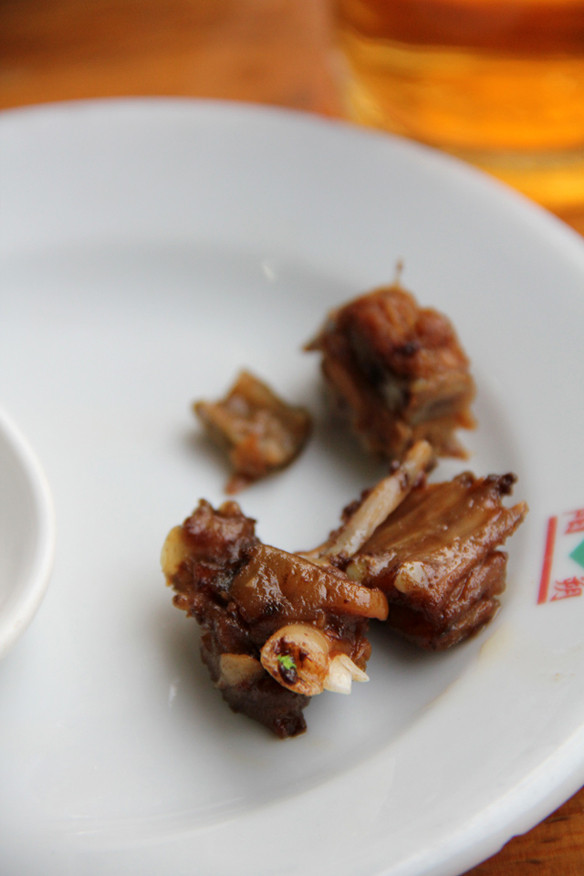Many people recoil at the idea of eating cat, or dog for that matter. However, for adventurous eaters keen on understanding diverse culinary traditions around the world, the question of what these meats actually taste like is a legitimate one. This isn’t about condoning or condemning the practice, but rather exploring the flavor profile of cat meat based on firsthand experience.
As a traveler with a palate open to new and unusual foods, I ventured into the realm of cat meat during a trip to China. Having already sampled dog meat, which I found surprisingly delicious, I was curious about its feline counterpart. Here’s my account of eating cat meat and a breakdown of its distinct taste.
 Eating Dog Meat in China
Eating Dog Meat in China
My Cat Meat Culinary Encounter in China
While dog meat is more commonly discussed and consumed in certain regions, cat meat also has its place in global culinary history, including parts of China, Peru, and Switzerland. In China, I had the opportunity to try a braised cat meat hot pot, an experience that certainly challenged my preconceived notions.
Initially, I imagined cat meat might resemble chicken in texture and taste. However, my expectations were quickly overturned. The dish arrived as a steaming wok filled with a rich, slow-cooked medley of spices, garlic, chives, and generous portions of bite-sized cat meat pieces. The sheer volume of meat suggested that a significant portion of a cat was used in this single dish. The aromatic spices, particularly star anise and dried Sichuan chilies, were immediately apparent and enticing.
 Eating Dog Meat – Dog Meat Clay Pot
Eating Dog Meat – Dog Meat Clay Pot
Decoding the Taste: What Cat Meat Really Tastes Like
Diving into the hot pot was an intriguing, albeit slightly unsettling, experience. As I navigated through the dish, I encountered various parts of the animal, including entrails and even teeth, which were mixed within the meat chunks. This visual aspect was certainly part of the overall experience.
Regarding the taste itself, cat meat was definitively not like chicken. It presented as a light-colored red meat, unlike the darker, richer meat of dog. The texture and flavor had a closer resemblance to pork, but with notable differences. Cat meat contained numerous small, transparent bones, reminiscent of fish bones, which required careful navigation while eating. Furthermore, there was a subtle sour aftertaste that lingered, distinguishing it from pork and other familiar meats.
 Cat Meat Hot Pot
Cat Meat Hot Pot
However, it’s important to note that not all parts of the cat meat were the same. The boneless chunks were considerably easier and more pleasant to eat than the bony pieces. Interestingly, the cat intestines were a surprising highlight. They were tender, flavorful, and arguably the best part of the dish, surpassing even some of the best intestines I’ve tasted.
 Yes, that’s a cat tooth.
Yes, that’s a cat tooth.
Cat Meat Compared to Dog Meat: A Culinary Perspective
Having tried both dog and cat meat, I can offer a comparative perspective. In this particular gastronomic exploration of Chinese cuisine, dog meat emerged as the more appealing option. Dog meat boasted a more tender texture and a more enjoyable, robust flavor profile, often described as a cross between beef and mutton but with a richer, meatier intensity.
Cat meat, on the other hand, was a more average culinary experience. While not entirely unpleasant, it lacked the distinctiveness and satisfying taste of dog meat. It wasn’t something I would actively seek out again. The slight sour aftertaste and bony texture detracted from the overall enjoyment, especially when compared to the flavorful and tender dog meat.
Ultimately, describing what cat tastes like is complex. It’s a light-colored red meat, texturally similar to pork but with a slightly sour tang and a bony composition. While adventurous eaters might find it an interesting experience, it may not become a favorite for most palates, especially when compared to other more commonly consumed meats or even its canine counterpart.
